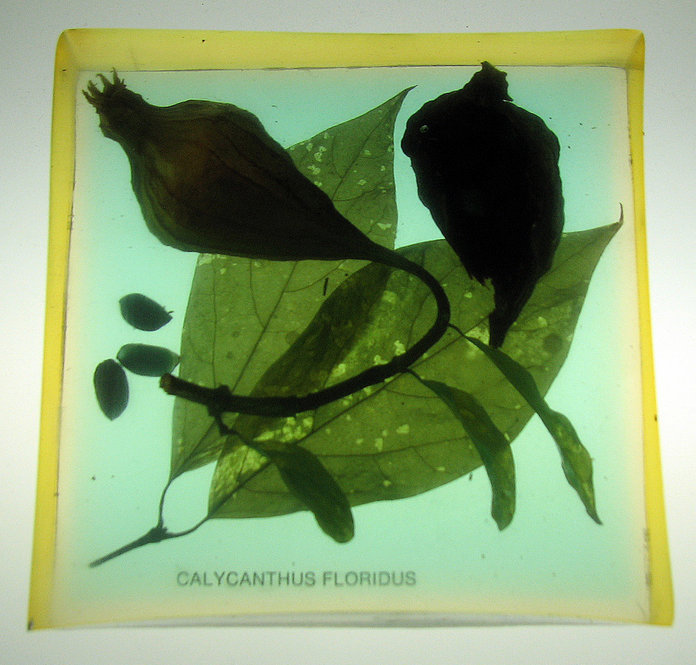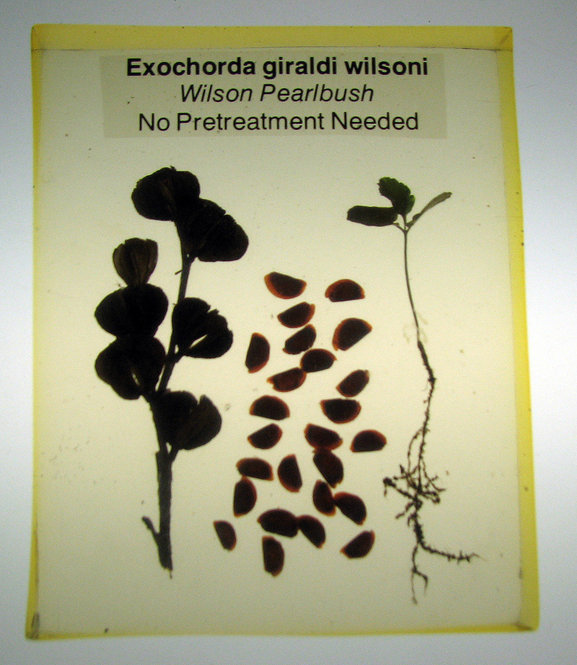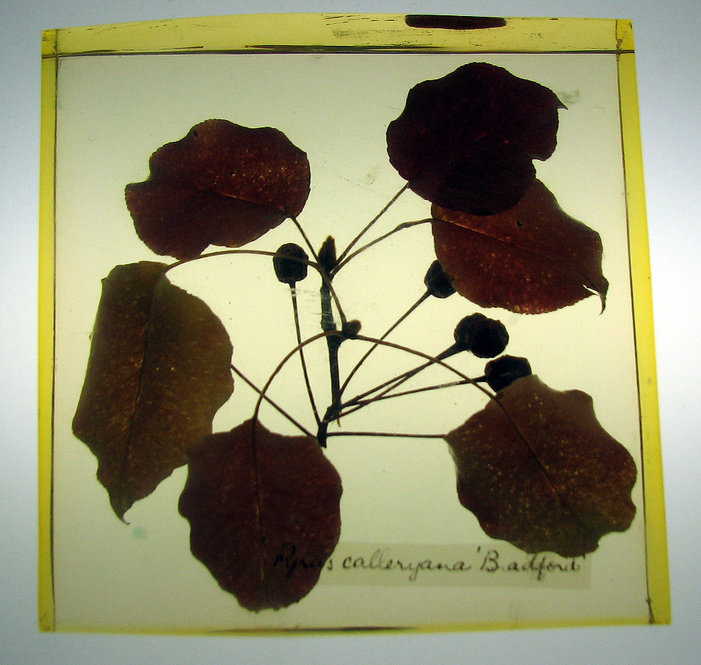In addition to the many thousands of specimens collected in the Cultivated Herbarium, The Arnold Arboretum Horticultural Library maintains a herbarium collection of its own! 288 dried specimens, encased in hard plastic, span a huge range of taxa collected from our grounds. Leaves and twigs, seeds and pods, cones and stems, these three-dimensional objects offer a unique method of examining plant life and anatomy.
This project was conceived in the early 1970s by Dr. Gordon P. DeWolf, Jr., then Horticultural Taxonomist at the Arboretum. He recruited the talents of longtime Arboretum docent Sheila Magullion to embed herbarium specimens into hard plastic for use as a teaching tool. Sheila experimented with various techniques, and through trial and error, produced hundreds of beautiful objects of various shapes and sizes. Certain precautions had to be taken during the procedure, as the chemicals in use were volatile and noxious. Sheila applied her artistic background to the process, and the results speak for themselves.
Today Sheila Magullion maintains her own garden of trees, shrubs and perennials in Massachusetts, and continues her artistic pursuits.
We invite you to come and view these unique objects in the Library Reading Room, and engage your taxonomic and historical interests.
— Larissa Glasser, Library Assistant



















